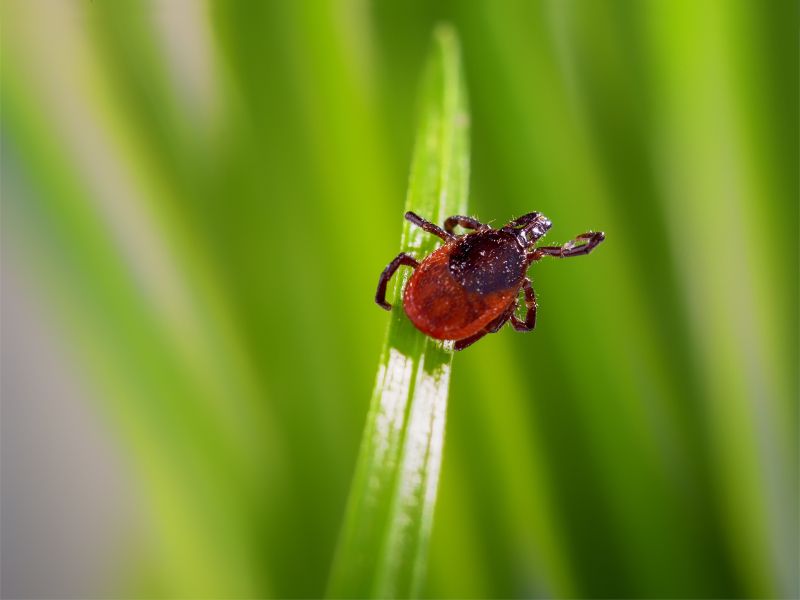All About Lyme Disease in Dogs

The arrival of spring brings with it plenty to be excited about – abundant sunshine, leaves on the trees, and relief from the endless winter, just to name a few.
Among the downsides of spring are the arrival of ticks, and here in the Northeast we have more than our fair share of these creepy crawlies to content with. Those of us with dogs know all too well how easy it is for our canine companions to pick up a hitchhiker or two after a walk or romp in the park.
It’s no secret that ticks can transmit a variety of diseases to people and pets, and Lyme disease is one of the most common, and most concerning. Preventing Lyme disease in dogs is critical to their long term health and well being, and fortunately it’s relatively simple!
Lyme Disease 101
Our neck of the woods is a virtual hotbed for Lyme disease (in fact, it’s named after the town of Lyme, Connecticut, where it was first discovered). The disease is caused by a spiral-shaped bacteria called Borrelia burgdorferi, and is transmitted via the bite of an infected tick.
Symptoms of Lyme Disease in Dogs
Borrelia burgdorferi is very well suited to live inside a dog’s bloodstream without incident, with only about 10% of dogs infected with Lyme disease will wind up experiencing symptoms (about 80% of infected humans will show some signs). In these cases, Lyme disease in dogs can manifest as:
- Fever
- Lethargy
- Decreased appetite
- Lameness
- Swollen joints
- Enlarged lymph nodes
Please contact us if you suspect your dog may have been infected with Lyme disease. Most dogs respond very well to treatment, and without it serious complications can arise.
Protecting Your Pal
Avoiding Lyme disease in dogs in the first place is always preferable to treating the illness once it has been established. Ticks are everywhere, but it is possible to limit their contact with your pet with the following habits:
Year-round prevention – Keeping your dog on a year-round flea and tick prevention protocol is the single best thing you can do to keep them safe. Your veterinarian is happy to discuss which product would best suit your pet.
On the trail and on-leash – Stay out of wild grassy or wooded areas whenever possible during tick season (April-October), in favor of well-kempt trails. Keep your dog leashed and on the trail at all times while hiking.
Daily checks – Check your dog’s coat each day for ticks, and remove any that you find immediately using proper technique. Pay special attention to the ears, face, armpits, paws, and under the tail.
Please don’t hesitate to contact the team at All Creatures Veterinary Hospital with any further questions you have regarding Lyme disease in dogs. We are here for you and your pet!

